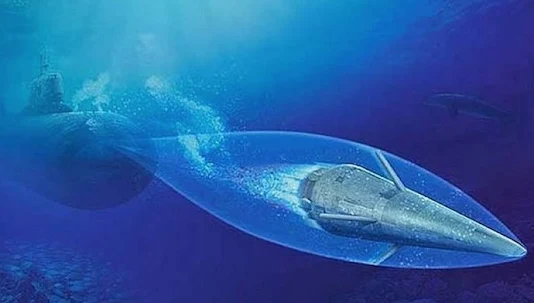Let's not talk about battle proven yet, even being tested is still a question mark, but the ability of the VA-111 Shkval torpedo, which can fly at a speed of 200 knots (370 km per hour), is definitely interesting to observe. To reach fantastic speeds, the Shkval is not powered by conventional torpedoes, but this Russian-produced torpedo uses a rocket engine with solid fuel.
The use of solid-fuel rockets for underwater rides was a major breakthrough. But to make it happen, we need supporting technology which is also spectacular in the torpedo segment, namely supercavitation.
Supercavitation is a phenomenon in which large air bubbles form around a torpedo, reducing the hydrodynamic drag that the torpedo faces as it moves underwater. The supercavitation process begins by producing air bubbles around the nose of the torpedo.
When the Shkval torpedo travels at high speed, the liquid around the nose is forced to the side and creates a vacuum zone in front of it. The air bubbles formed cause the front of the torpedo to separate from the water, creating a void or cavity.
This cavity is the so-called "supercavity," which allows the torpedo to "glide" through the water without experiencing the large friction experienced by conventional torpedoes.
In doing so, the supercavitation on the Shkval reduces drag and allows the Shkval torpedo to travel at speeds far exceeding those of other torpedoes. This high speed allows the torpedo to reach its target very quickly, reducing the time it takes to reach the target and leaving the target little time to react or evade.
Supercavitation also provides the additional benefit of evading sonar-based anti-torpedo defense systems. Because the Shkval torpedo moves through the water, the acoustic waves generated by the torpedo are much smaller than that of a conventional torpedo moving through the water, making it difficult to detect by surface ships' sonar sensors.
The following explains how supercavitation can occur on Shkval torpedoes:
1. Strong Drive
The Shkval uses a solid fuel rocket engine which provides a powerful thrust aft of the torpedo. This thrust creates high velocity on the torpedo, which creates high pressure in front of the torpedo as it moves through the water.
2. Air Bubbles
The high pressure created by the speed of the torpedo causes the water around the nose of the torpedo to be forced sideways, creating a vacuum zone in front of the torpedo. This large bubble of air creates a "supercavity," meaning the torpedo travels in an air cavity, not in the water, as it travels at high speed.
3. Air Space
When the supercavity is formed, the Shkval torpedo moves in a relatively large air cavity. This air space reduces the torpedo's contact with the water, significantly reducing its hydrodynamic drag.
4. Barrier Reduction
By reducing hydrodynamic drag, supercavitation allows Shkval torpedoes to travel at speeds far exceeding those of conventional torpedoes. This provides a tactical advantage as torpedoes can reach targets quickly, reducing enemy reaction time and giving them limited time to react or evade.
Although supercavitation reduces drag and increases the speed of the torpedo, the Shkval torpedo has limited range and limited battery life due to the high power consumption when in supercavitation mode. Because of this, the Shkval is more suitable for close-range missions and special assignments, rather than being used as a general torpedo attack solution.



